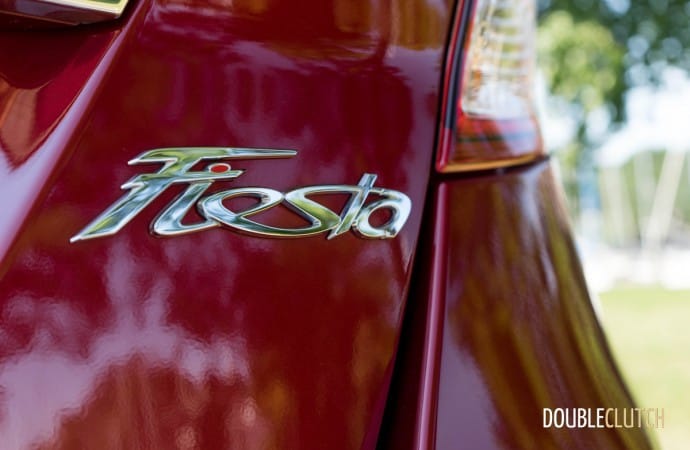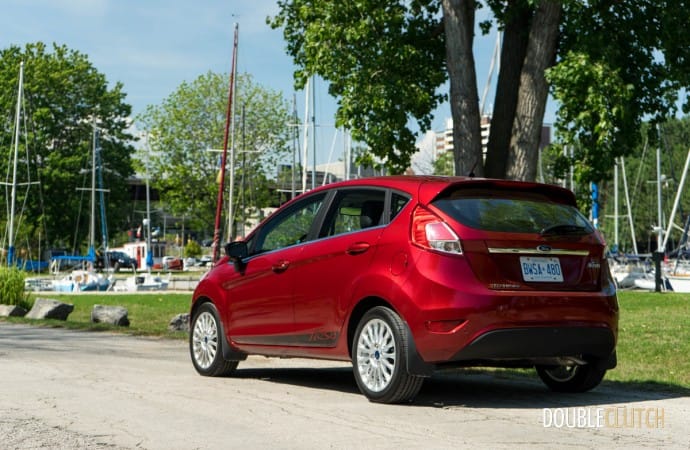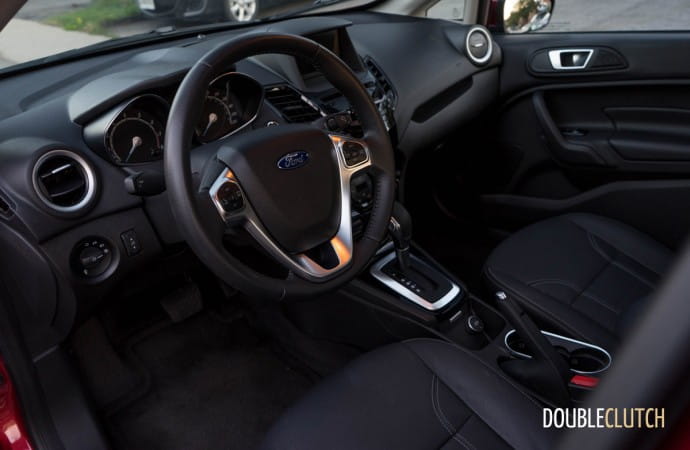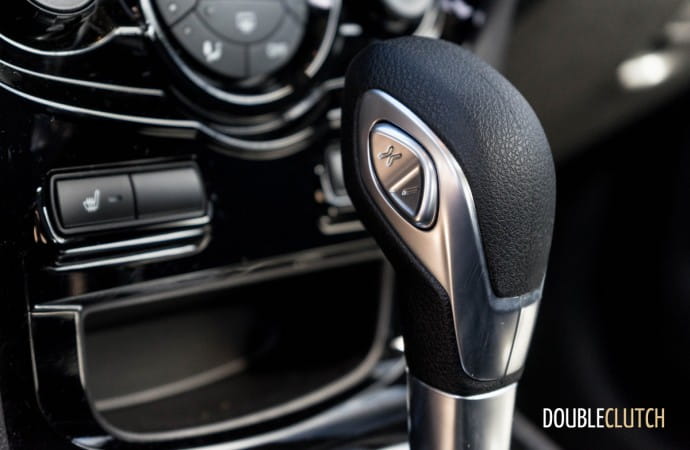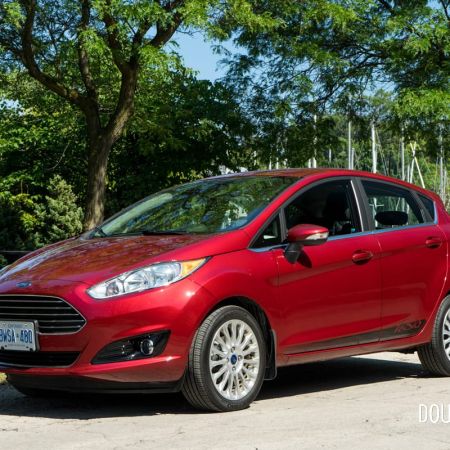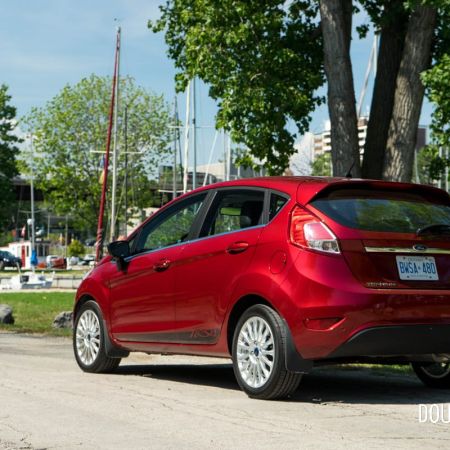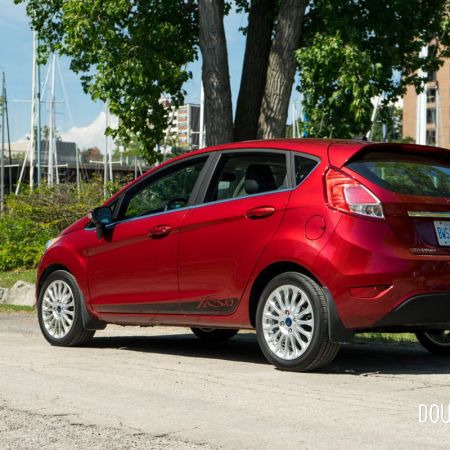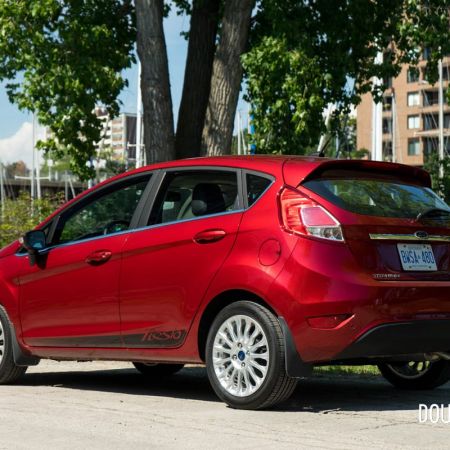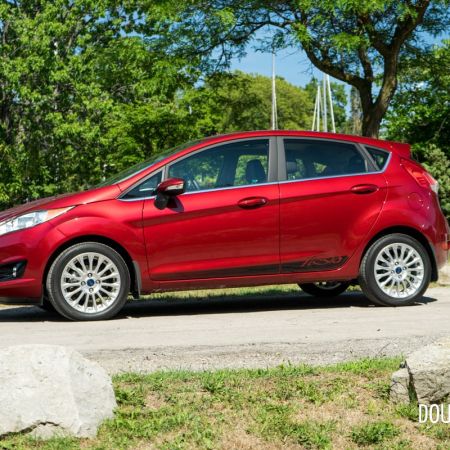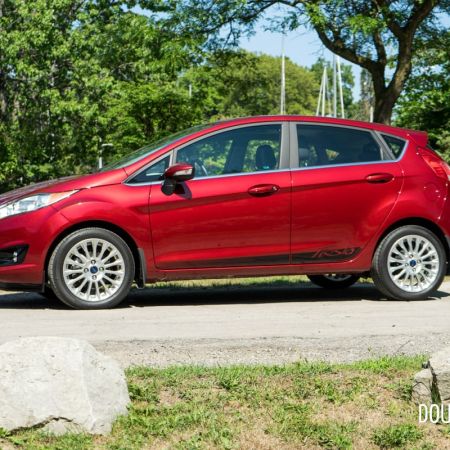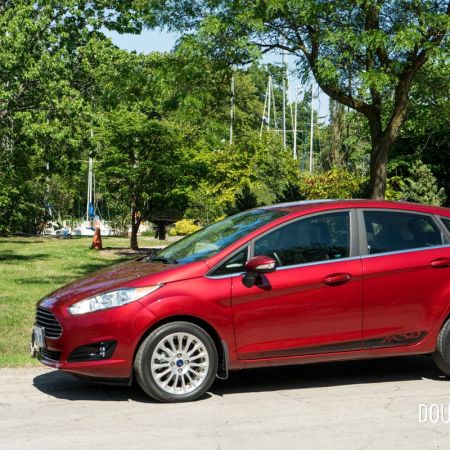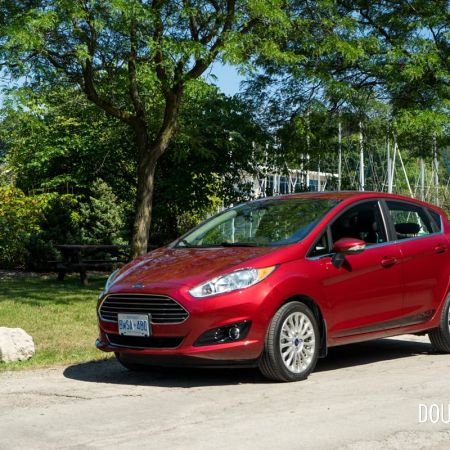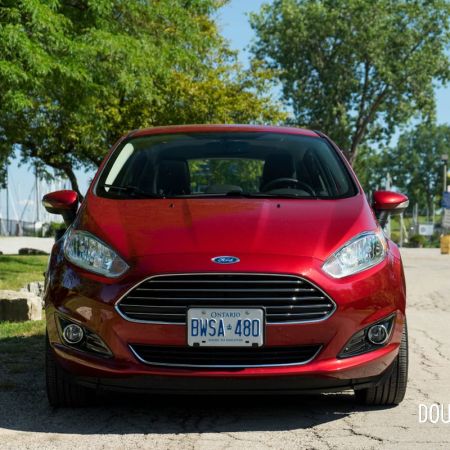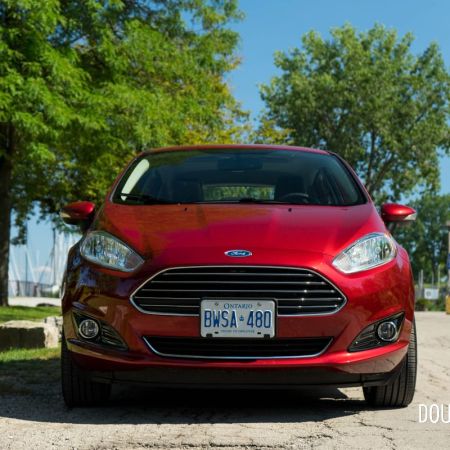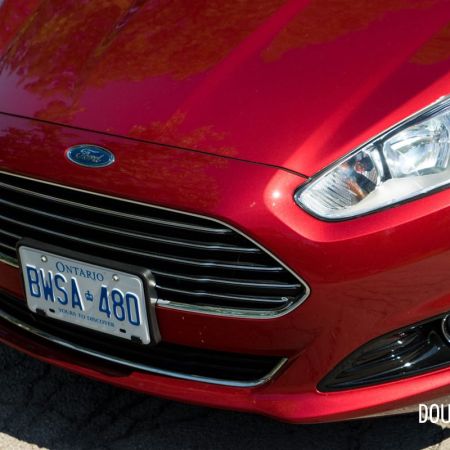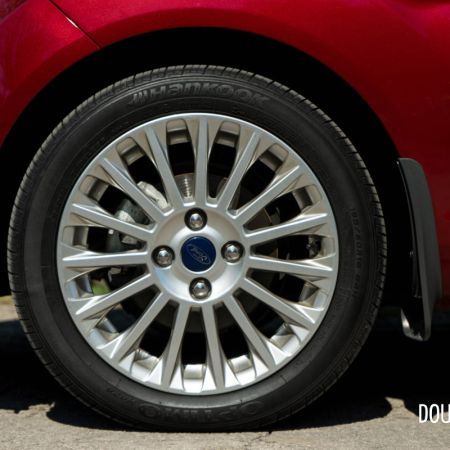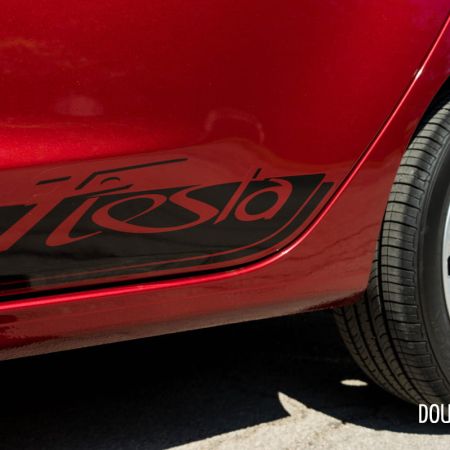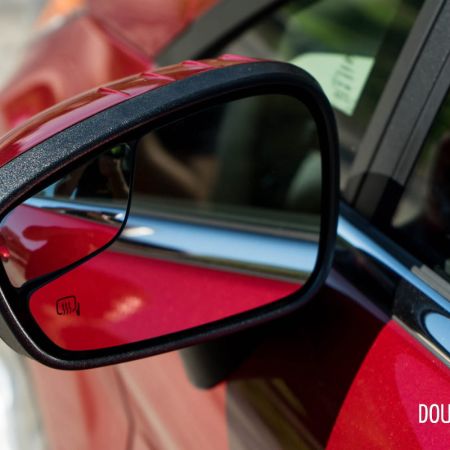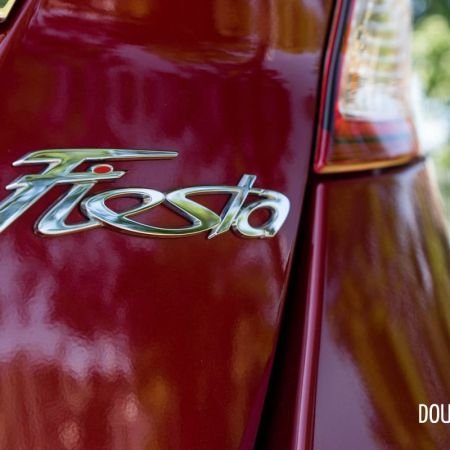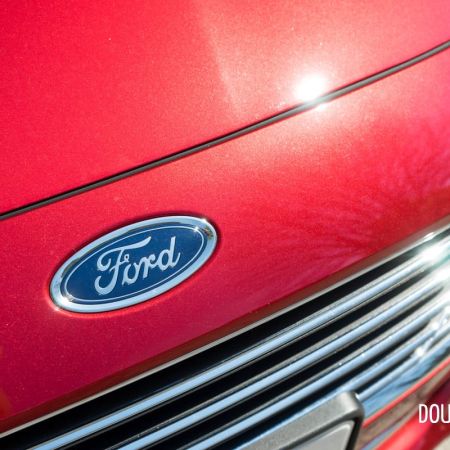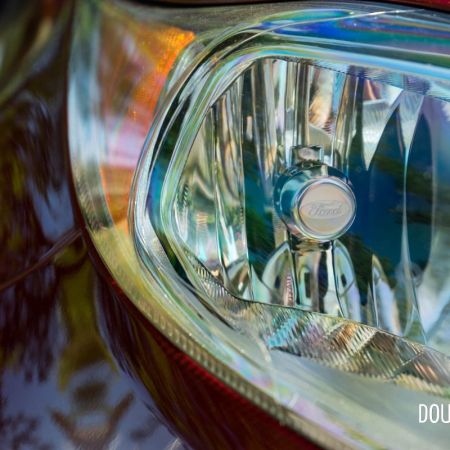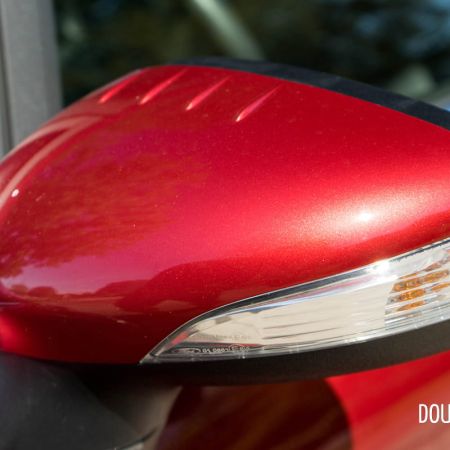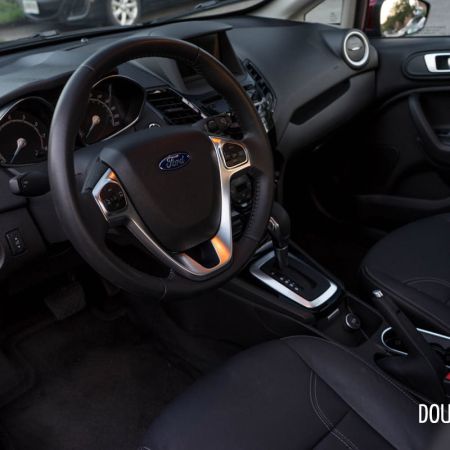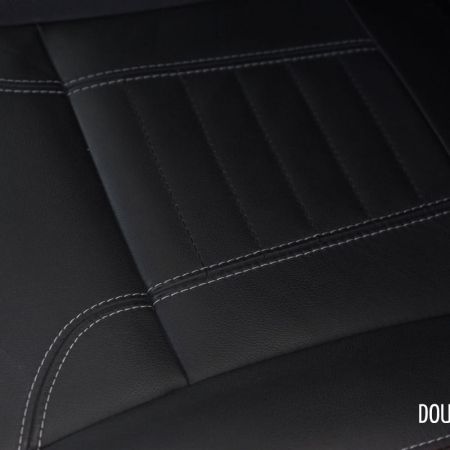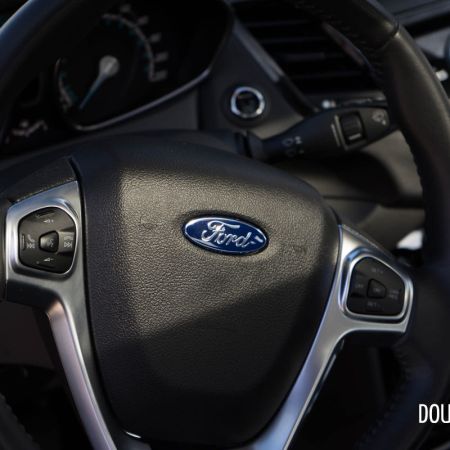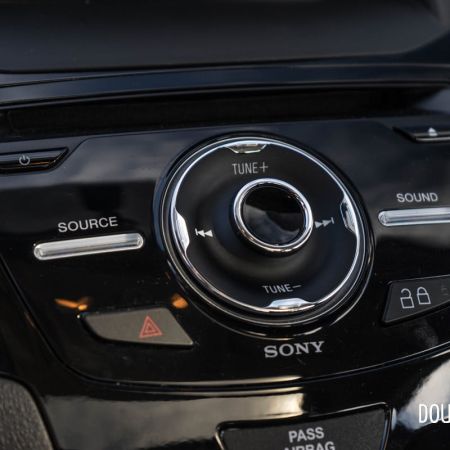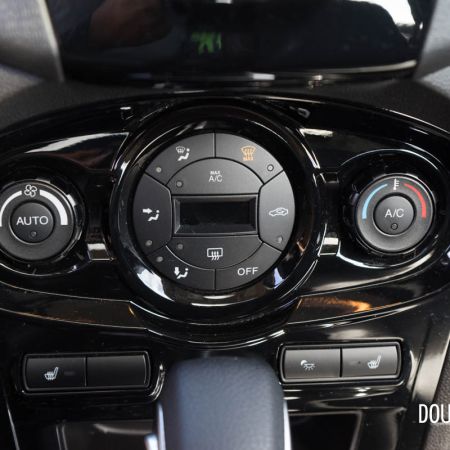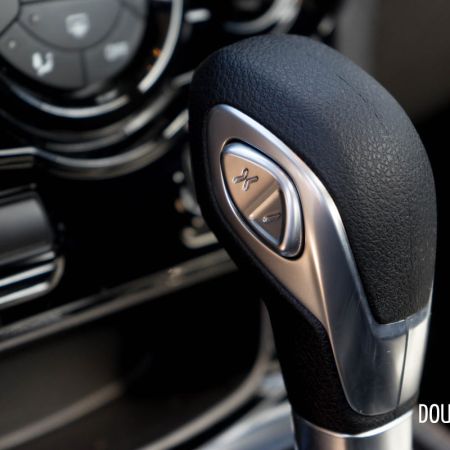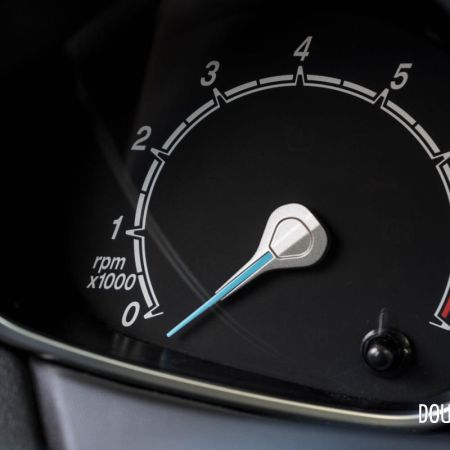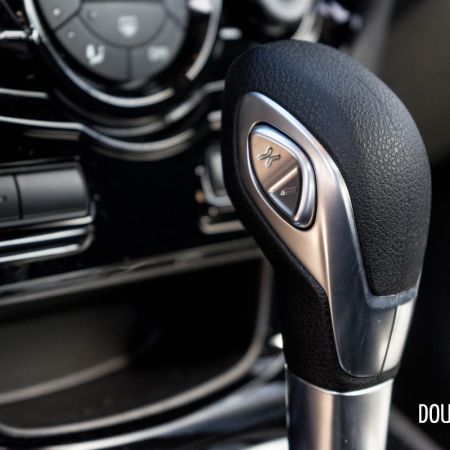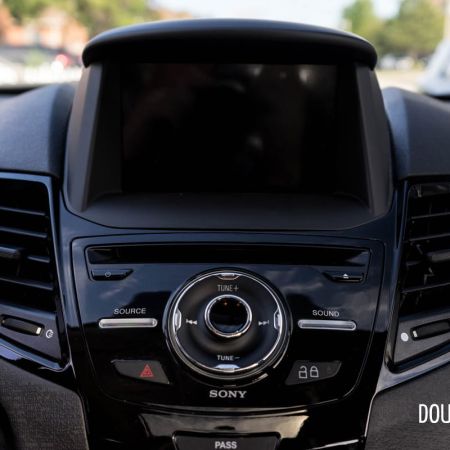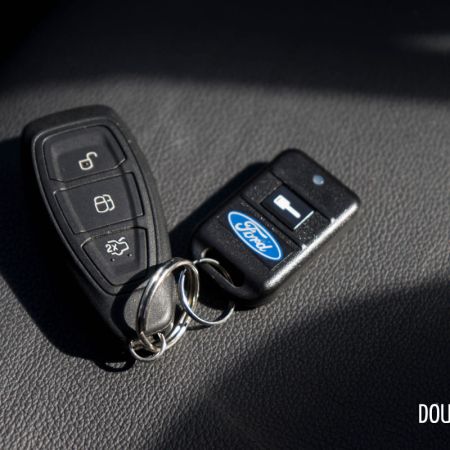It seems as though the days of big, bulky cars are becoming a thing of the past. Drivers are embracing smaller vehicles as more convenient methods of transportation in major metropolitan areas. Not only are the cars in this segment easier to live with, they come at a much more enticing price than their larger counterparts. Granted, the lower pricing limits the amount of available gadgets, however that’s exactly what makes these cars an affordable option for small families and younger drivers.
The 2016 Ford Fiesta Titanium offers added luxury to the subcompact car, with full leather seats and SYNC 3 technology. It stands as the top-line trim without entering the performance segment with the Fiesta ST (reviewed here). It comes with the same available 1.6L TI-VCT I-4 engine as other Fiesta, with the option of either a standard five-speed manual gearbox or the upgraded six-speed PowerShift automatic, with a respectable 120 horsepower and 112 lb-ft of torque. Yes, the manual gearbox does offer more engagement for the driver which in-turn would make this little go-getter a tad more spirited, but when the target demographic for this particular vehicle is taken into account, it is understandable that most models will be sold as automatics.
Our tester came optioned with the six-speed PowerShift dual-clutch gearbox. Over the course of a week, the Fiesta earned a combined average of roughly 7.5L/100km, which is not far off from the factory 8.7L.100km highway and 6.4L/100km city per 100km ratings. Naturally, this engine only requires 87-octane regular fuel, even in “Titanium” trim. The turbocharged ST is helped with premium in the tank.
The exterior design for this rendition of the Fiesta has not changed very much since the release of the current generation in 2010, whereas the interior has received minor upgrades over the years, mostly focused around the media controls towards the centre of the dashboard. The leading improvement of the new Titanium lies within the 6.5-inch screen found on the dash. Sync 3 has been integrated into this little car, expanding its technological reach. This news starts sweet; however, it ends with a bit of an aftertaste.
Ford opts to use touchscreen technology in their vehicle lineup, which is fine, except in the Fiesta. The placement of the screen is so far up on the dash it makes it difficult to operate when in motion. This placement, combined with the small screen, makes it a less than ideal system to work with. Luckily, basic controls for volume and air conditioning are available either on the steering wheel, or as console hard keys. However, the majority of SYNC 3’s features are only available via the touchscreen menus.
Otherwise, the interior cabin of the Fiesta boasts a familiar tone found in other Ford vehicles. While the S and SE variants merely offer clothes seating options, the Titanium allows buyers to chose between two leather options; one being the darker Charcoal Black, and the other a lighter cream colour called Medium Light Stone.
When looking at the Ford Fiesta, it is admittedly one of, if not the best-looking subcompact car currently on the market. The 2010 introduction of the car to the North American sparked a new love for this minute vehicle. The front end reminiscent of some Aston Martin design cues, combined with some large, sweeping headlights give the car true road presence that its competitors simply cannot replicate.
The exterior of the Fiesta tries to stands true to its name. The fun design combined with a flurry of colours lets potential buyers express themselves in ways other cars can’t. Our tester wore the optional Ruby Red Metallic paint, with the additional Fiesta door graphic installed on both sides of the vehicle. The darker tint of the clearcoat really sets off a nice contrast with the silver, multi-spoke 16-inch wheels, exclusive to the Titanium model.
Now here lies my concern – just as any top-line trim vehicle, I’m left with the same thought floating around my head: is it really worth it? Why not move up a model with fewer options? Surely a decently equipped Focus (reviewed here) can be had for similar money? The Fiesta Titanium has a base price of $20,599, roughly $4,500 more than the SE and S variants. This abse sticker does not include the upgraded metallic paint ($450), Fiesta graphics ($200), power moonroof ($1200), PowerShift gearbox ($1250), voice-activated navigation ($800), or the remote start system ($300).
Once all is said and done, our tester came loaded with an extra $4,850 worth of options, bringing the base price up from $20,599 to $25,449. Once we factor in destination and delivery charges, that total comes to $27,074, pre-tax. That’s where this car stops making much sense. For what will be a $30,000 vehicle, the Fiesta Titanium doesn’t offer the same kind of fit and finish that is expected for that kind of price. For instance, the Titanium badge on the rear of the car just seems out of place, almost as if it were an afterthought. It’s a minor observation, though I see it foreshadowing the entire car.
To me, the subcompact segment is meant to cater to those looking for a nice, small car that presents the best bang for your buck. Opting for the Titanium only makes sense if extra options are added to set it apart from the SE trim, but even then, adding those options increase the cars price to the point where goes back to not making any financial sense… so why bother? For what ends up being over $25,000, it would be a healthier choice to upgrade to a Focus or opt for a lesser trim of the Fiesta (reviewed here). As it stands, the Fiesta Titanium is a very nice little car that makes a ton of sense if its size and premium options are a necessity.

